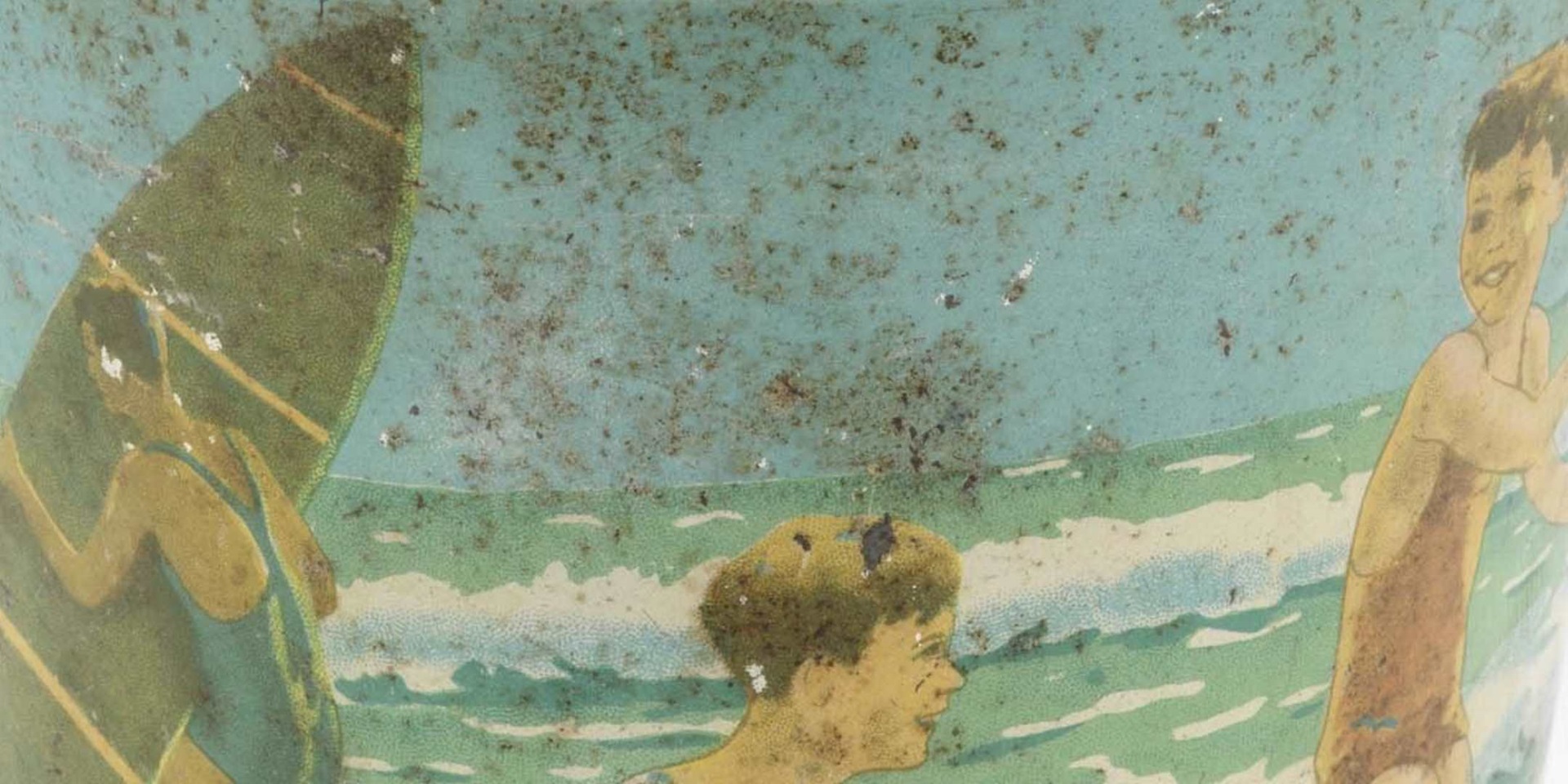

Child’s toy sand bucket, manufactured by Chad Valley Toys and featuring the boat ‘Saucy Sal’, circa 1930. ANMM Collection 00001533.
Where does Australians’ love of the sea first start if not at the beach as children? Absorbed for hours by the sand, ignoring the heat and discomfort of constantly wet swimmers, they diligently build and rebuild imagined cities and swimming holes, filled up by countless trips down to the water’s edge to return with slopping buckets of seawater.
In the big scheme of the museum’s collection, they are not your standout items. Overshadowed by bigger and bolder objects jostling for gallery space, the collection of beach buckets sits in storage protected from the rigours of the outside world. But they are very much part of the fabric of Australian maritime history.
These days of course, beach buckets are plastic and are most likely accompanied by so many add-ons that a whole bag is now designated to their transport. Yes, modern versions may not rust. Modern versions may build more intricate sand castles. But they lack the charm and significance of the originals.
The simple little buckets in the ANMM collection represent a time of great change in Australian culture – when the coast became not only a source of employment but an acceptable and widespread source of pleasure for all, and where all members of the family and all classes of society could share the joy of the same experience.
In the mid-19th century beachgoing became easier and more popular and families took their leisure time to the shore. More accessible public transport meant that picnics, walks on promenades and paddling became weekend staples. Children discovered the simple joy of wet sand. Manufacturers soon caught on and beach toys of small buckets and spades made of tin were produced.
These were small and light enough for little hands to carry. They were decorated with brightly coloured scenes of cheery animals and frolicking children that soon gave way to licensed characters from Disney and other popular cartoons of each era.
And it wasn’t just toy manufacturers that jumped on board. The quintessential Australian company Arnotts produced a range of beach buckets in the 1930s. Carried outside the home and made to last, these tin buckets were part of a history of marketing that became synonymous with the brand.
The buckets in the ANMM collection were not disposable objects. They were not forgotten in the sand at the end of the day as the sun went down and families packed up. Some buckets are dented and worn, their once vivid colours faded by days in the sun. But the hours of fun and litres of water they must have carried made them special to someone.
For more curious objects and tales from our collections, head over to our Google Cultural Institute and Flickr pages.



![ANMS1032[052]_01 A young boy with a beach bucket. ANMM Collection ANMS1032[052].](https://s3-ap-southeast-2.amazonaws.com/anmm-data/blog/2016/03/22/anms1032052_01.jpg)



